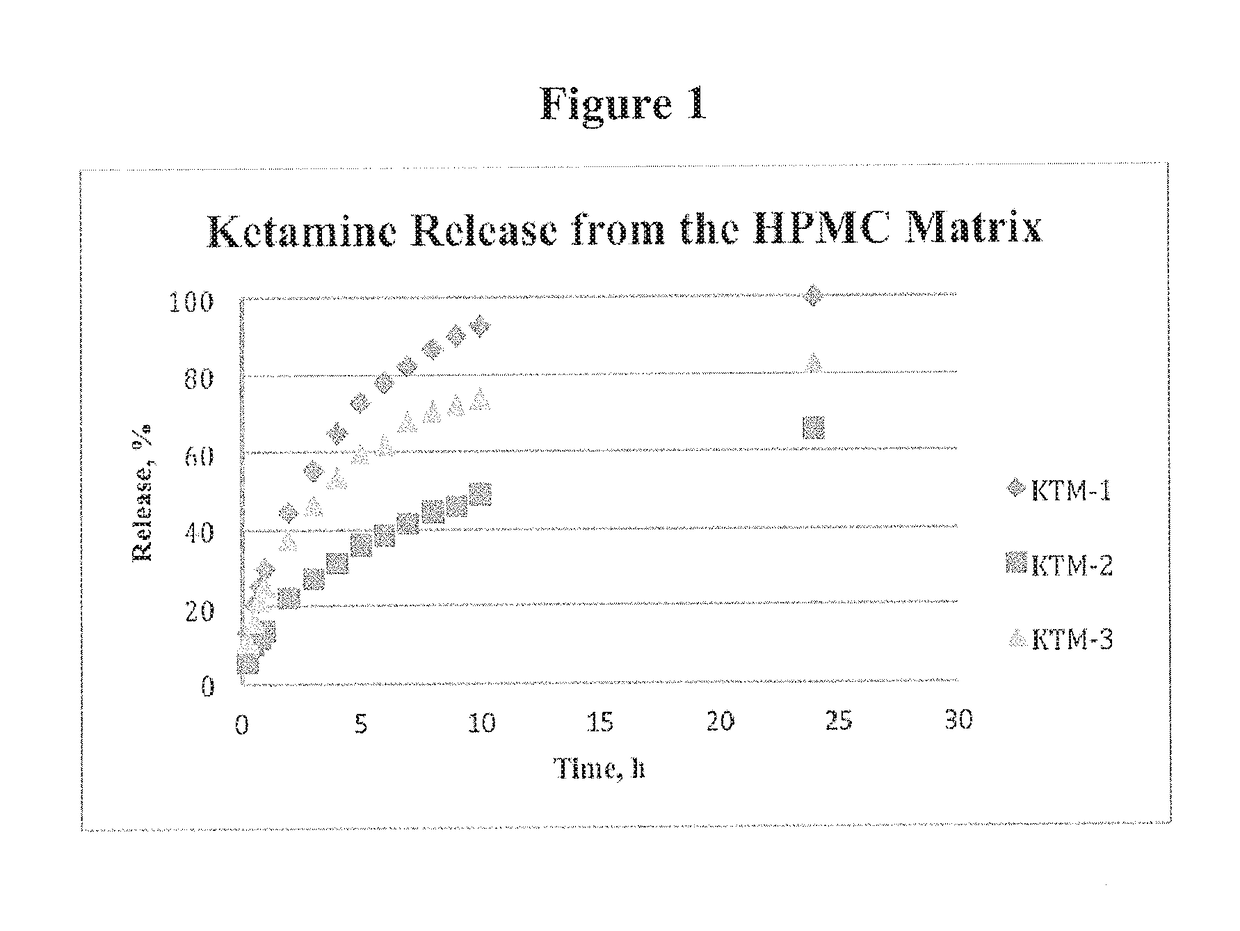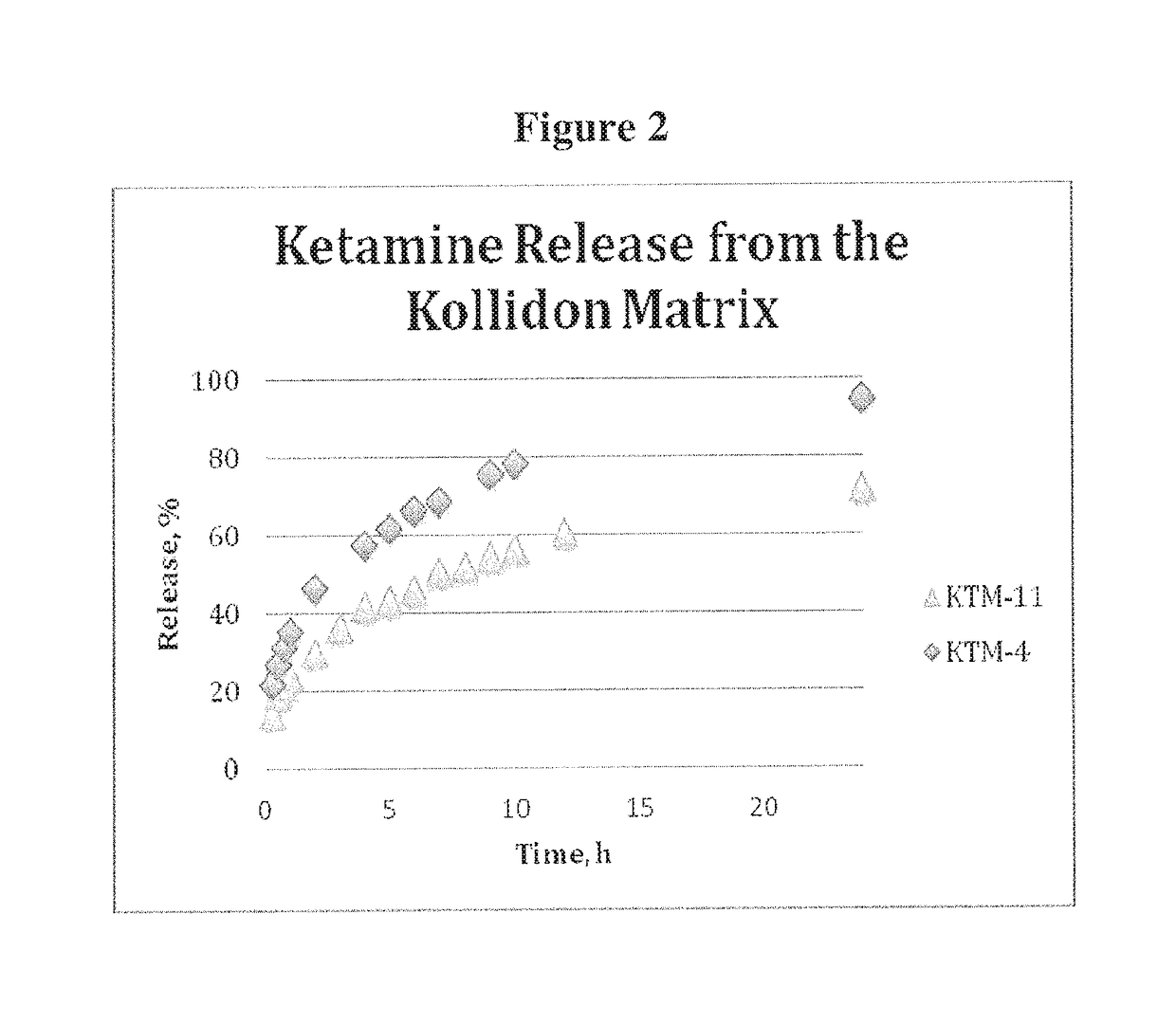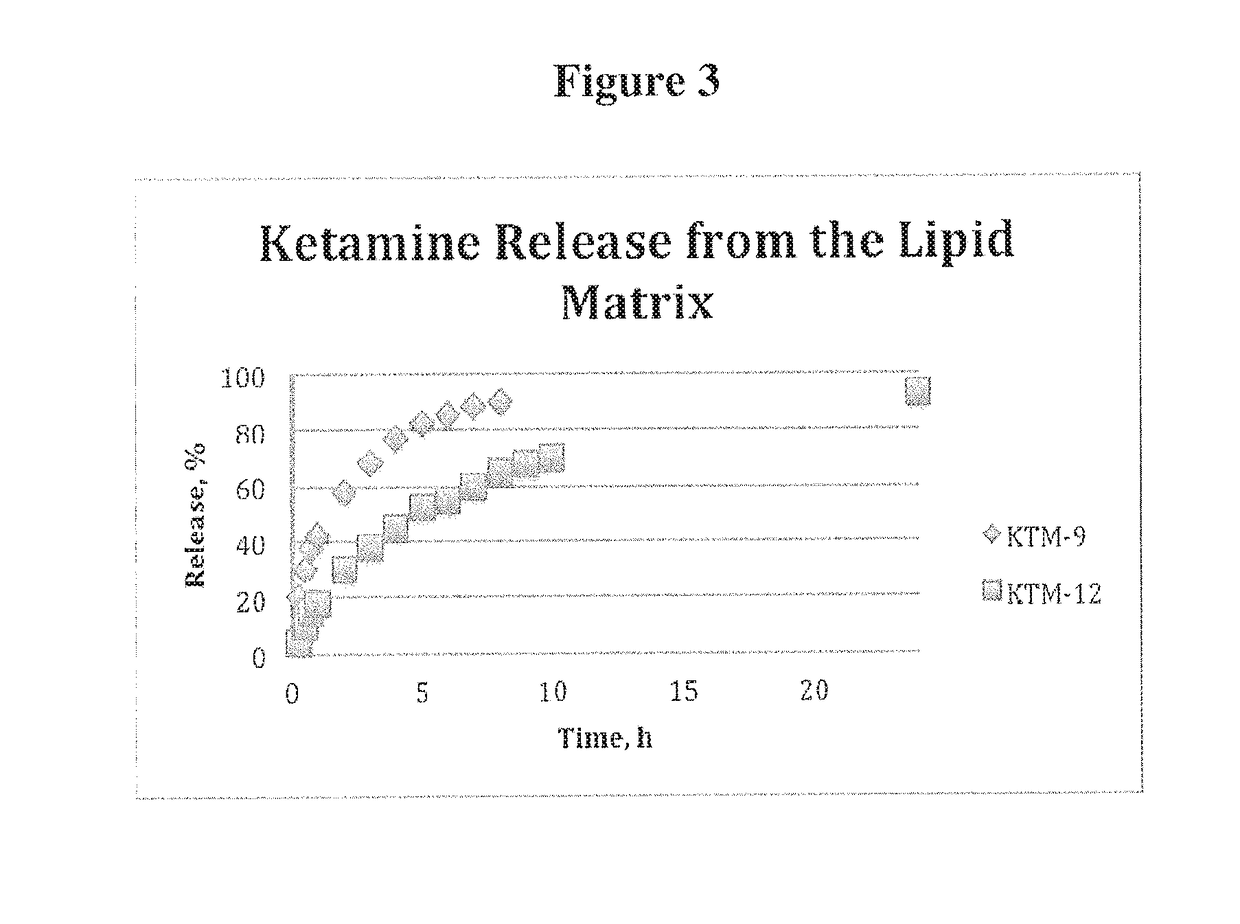Neuro-attenuating ketamine and norketamine compounds, derivatives thereof, and methods
- Summary
- Abstract
- Description
- Claims
- Application Information
AI Technical Summary
Benefits of technology
Problems solved by technology
Method used
Image
Examples
example 1
[0367]Formulation of the Controlled Release Ketamine Tablet using a Matrix Based on HPMC and Starch
[0368]1, by dry granulation using a controlled release matrix based on a combination of hydroxypropyl methyl cellulose (HPMC) Methocel KM100 CR and pre-gelatinized starch Starch 1500. Methocel, Starch 1500, ketamine and Cab-o-Sil (colloidal silicon dioxide) were coarsely mixed and passed through a 40-mesh screen to break-up agglomerates. Microcrystalline cellulose was then added and the mixture blended in a 100 ml tube blender for 15 minutes at 200 rev / min. The full composition of ketamine tablet KTM-1 is presented in Table 1.
[0369]After blending, magnesium stearate was added and blended for additional 3 minutes. The 200 mg convex-shaped tablets containing 20 mg of ketamine were compressed using a TDP tablet press and 9 mm dye. By applying a compression force of 8 kN, the tablets of the hardness in the range 13-15 kP were generated. The tablet dissolution was carried out in a Type II d...
example 2
[0372]Formulation of the Neuro-Attenuating Ketamine Tablet using HPMC and Polyacrylate
[0373]Ketamine was formulated into a tablet form by dry granulation following the general procedure as described in the Example 1. The control formulation KTM-1 presented in Table 1 was supplemented by adding polyacrylic acid, Carbopol 974 NF (Noveon), for a total content of 16.7% and 9.1% to make compositions KTM-2 and KTM-3, respectively (See Table 1).
[0374]Consequently, this addition led to a surprisingly dramatic slowing down of the release (FIG. 1). Compared to the KTM-1, at the 10 hour time point KTM-2 showed only 49% of the drug was released; and at 24 hours 62% of the ketamine was released.
[0375]Moreover, reducing the level of Carbopol (i.e., polyacrylic acid) to about 9% in KTM-3 generated a release profile that matched closely to a window of 24-h, for once-a-day ketamine applications. The amount of the drug released at 24 h was about 82%. Composition KTM-3 was considered for development g...
example 3
[0376]Formulation of Sample 36 Hour Neuro-Attenuating Ketamine Tablet with Kollidon SR
[0377]Based on the potential for additional in situ electrostatic interactions of ketamine with the polymer matrix to retain the drug, a polyvinylacetate / povidone based polymer (Kollidon® SR) was elected. It consists of 80% Polyvinylacetate and 19% Povidone in a physical mixture, stabilized with 0.8% sodium lauryl sulfate and 0.2% colloidal silica. Kollidon SR possesses good compressibility and typically displays drug release profile independent of the dissolution medium (pH and salt / ion content).
[0378]A 200 mg tablets containing 20 mg of ketamine was produced using protocol similar to Example 2, with a mixture of Kollidon SR and microcrystalline cellulose to produce formulation KTM-11. The tablet composition is presented in the Table 2. The tablets displayed a good hardness, in the range of 15-20 kP, and released 56% of the drug at 10 hours and 78% at 24 hours, with full release expected to be bet...
PUM
| Property | Measurement | Unit |
|---|---|---|
| Percent by mass | aaaaa | aaaaa |
| Structure | aaaaa | aaaaa |
| Disorder | aaaaa | aaaaa |
Abstract
Description
Claims
Application Information
 Login to View More
Login to View More - R&D Engineer
- R&D Manager
- IP Professional
- Industry Leading Data Capabilities
- Powerful AI technology
- Patent DNA Extraction
Browse by: Latest US Patents, China's latest patents, Technical Efficacy Thesaurus, Application Domain, Technology Topic, Popular Technical Reports.
© 2024 PatSnap. All rights reserved.Legal|Privacy policy|Modern Slavery Act Transparency Statement|Sitemap|About US| Contact US: help@patsnap.com










